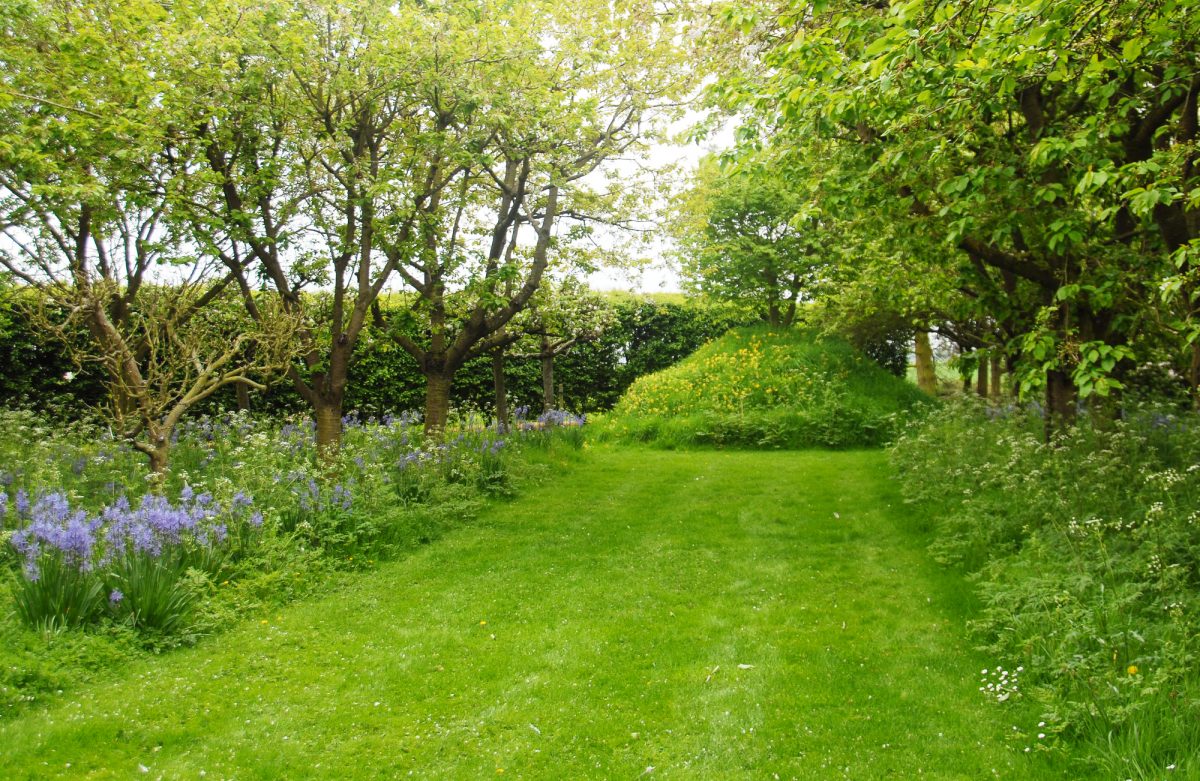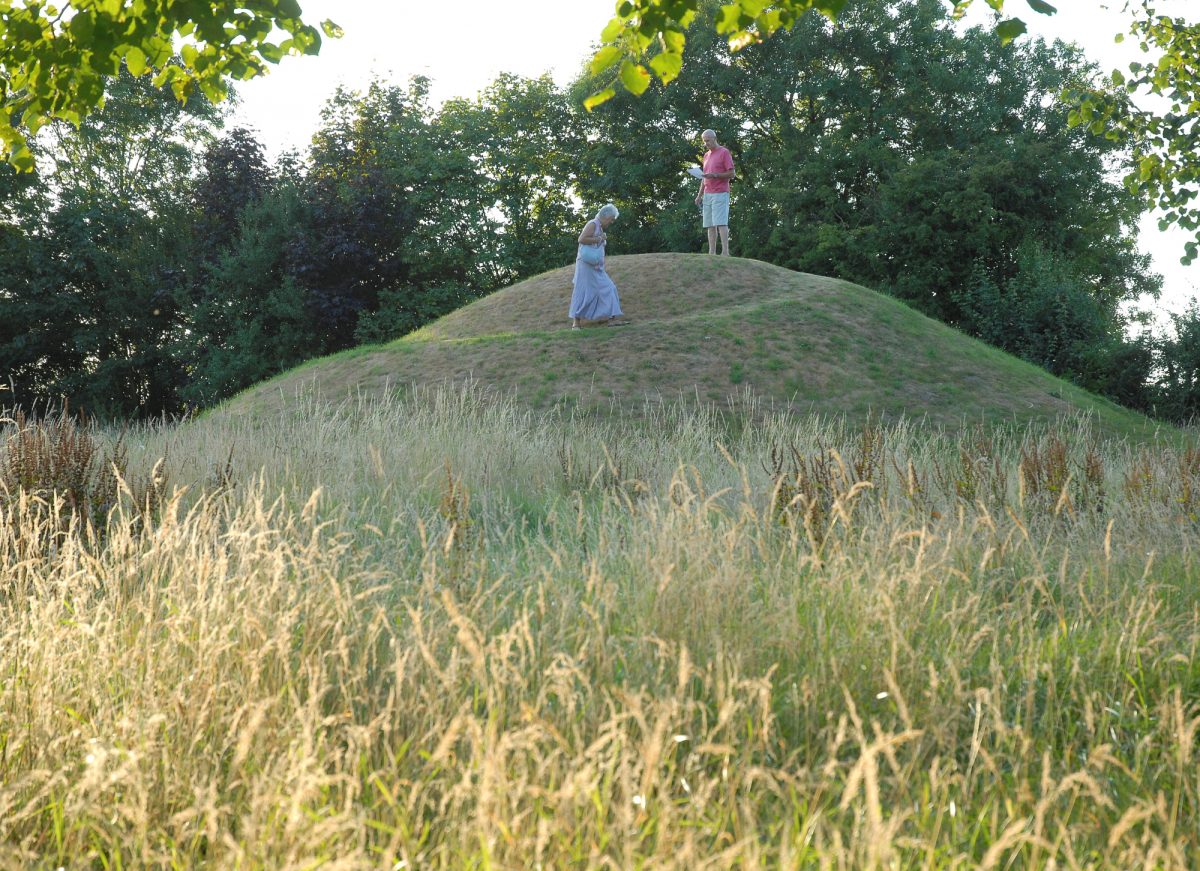Mount
Mount
Artificial hills or mounts, (smaller than ancient barrows) created a welcome diversion and change in levels, especially in flat fenland. They were often situated at the corners of the garden to provide views of both the garden and the land beyond.
Modern Snail mount at Guanock House (Image: Steffie Shields)
A modern ‘snail mount’ (1990’s) by Chelsea Gold Medal-winner designer, Arne Maynard, is situated in an orchard as part of an array of 20C garden ‘rooms’ setting of Guanock House, a 16C brick manor house. The path winding round to the summit gives views across Sutton St James fen.
20th century snail mount at Aslackby Manor (Image: Steffie Shields)
Mounts were usually created with spoil from demolished walls, or from digging out fishponds and canals, as seen here, another late 20C snail mount at Aslackby Manor, where there is a formal rectangular pool in ‘a yew-enclosed ‘garden room’.
Two old examples of mounts near Wainfleet are thought to have been an aid to the navigation of ships into the ancient port.


